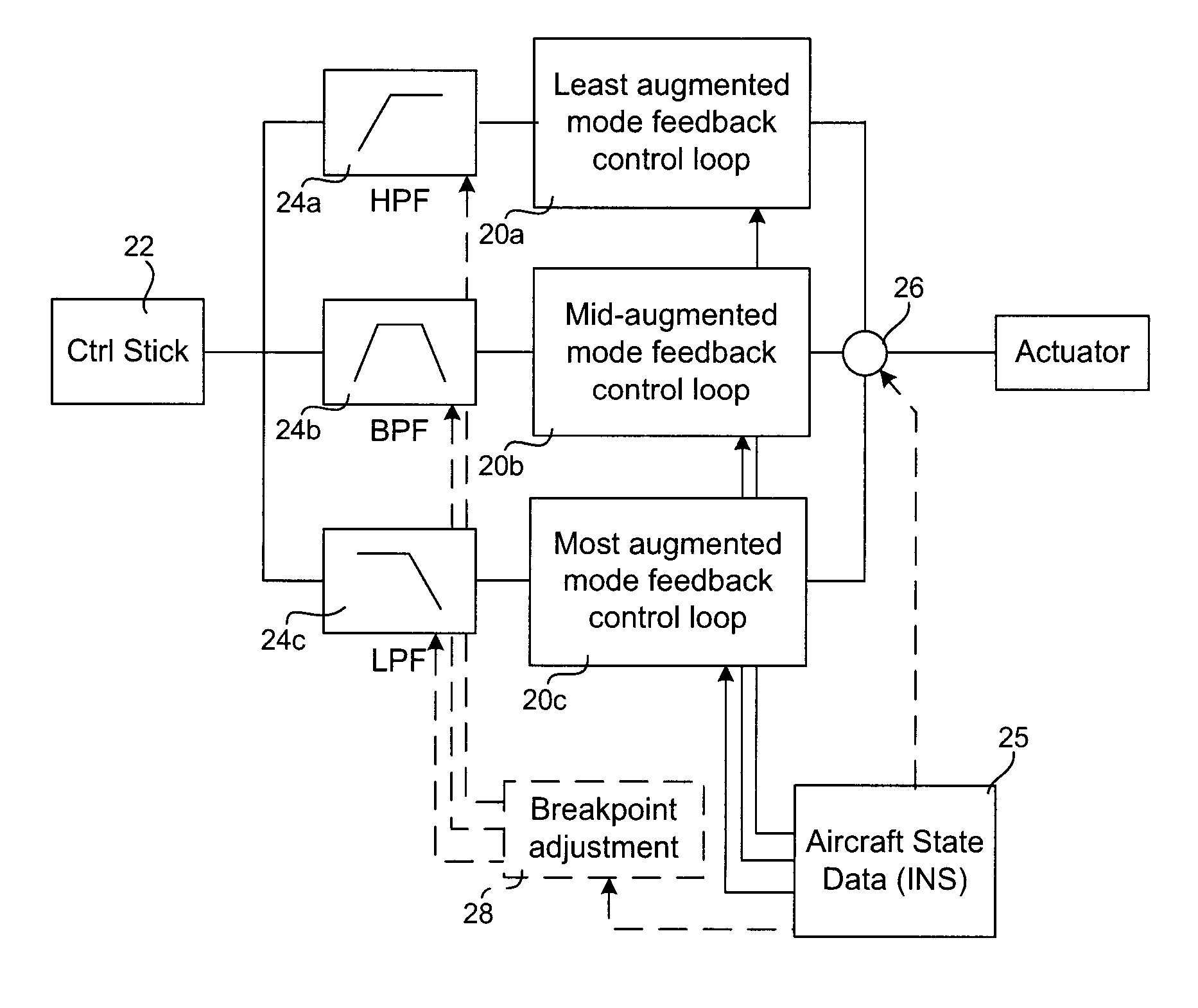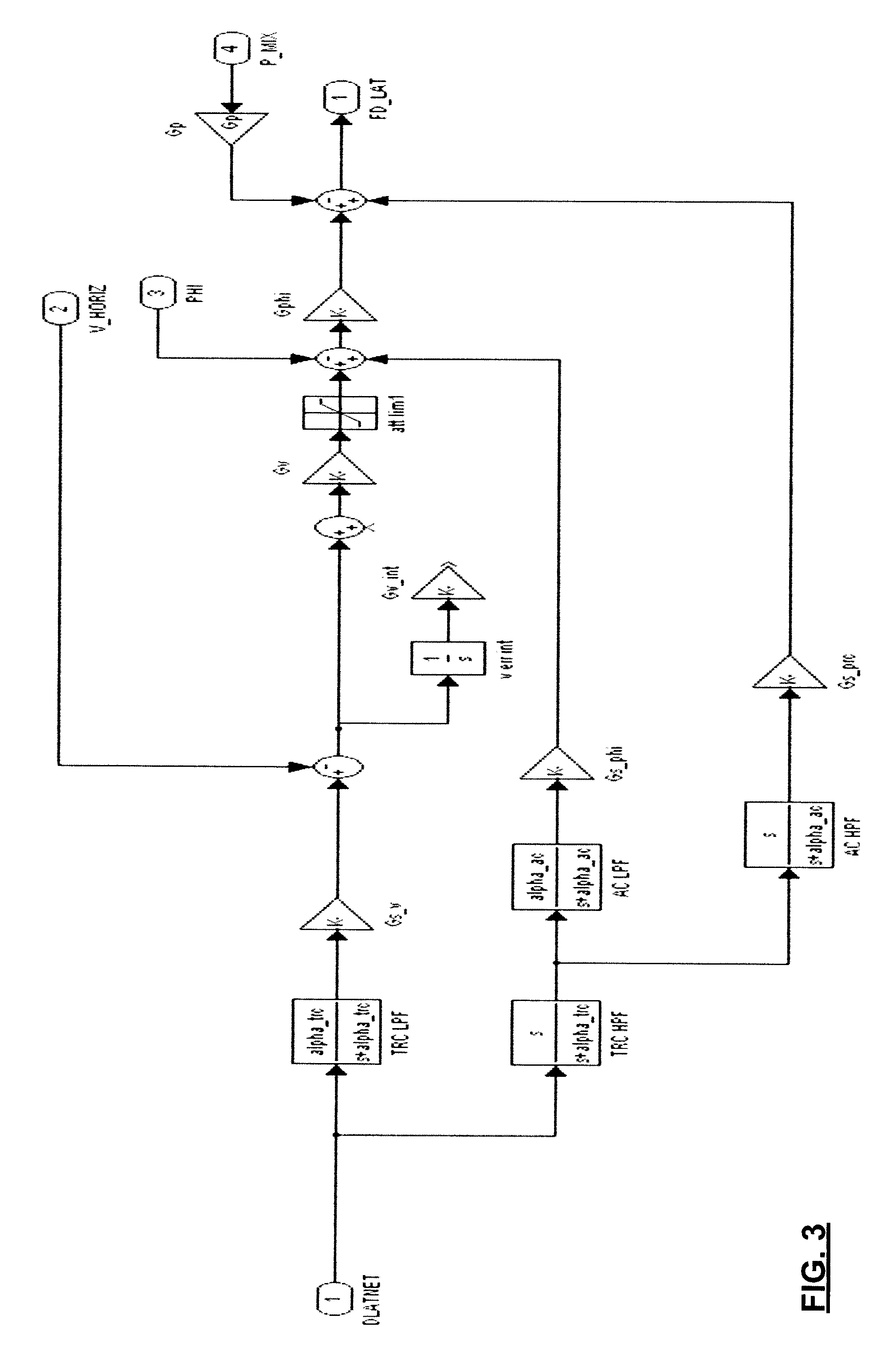Response mode for control system of piloted craft
a technology of piloted craft and response mode, which is applied in the direction of process and machine control, instruments, navigation instruments, etc., can solve problems such as difficulty in controlling a position, and achieve the effect of smooth command signalling and greater precision and responsiveness
- Summary
- Abstract
- Description
- Claims
- Application Information
AI Technical Summary
Benefits of technology
Problems solved by technology
Method used
Image
Examples
examples
[0041]FIG. 3 is a schematic of a Matlab Simulink diagram of an embodiment of a frequency multiplexed multi-mode response type used in simulation of lateral axis motion of a helicopter, which later formed the starting point for coding the controller for experimental flight testing. The pilot control input (DLATNET), is separated in terms of frequency content by passing through the filter network, consisting of the translational rate command low pass filter (TRC LPF), the attitude command / attitude hold band pass filter (TRC HPF and AC LPF) and the rate command high pass filter (AC HPF). Each path receives respectively filtered signals that are independently amplified to provide relative weightings for each path: GS_V is the gain on the velocity command, GS_phi is the gain on the attitude command, and GS_prc is the gain on the rate command. The rest of the structure is essentially a standard feedback control system, with the following features. The velocity command is differenced with ...
PUM
 Login to View More
Login to View More Abstract
Description
Claims
Application Information
 Login to View More
Login to View More - R&D
- Intellectual Property
- Life Sciences
- Materials
- Tech Scout
- Unparalleled Data Quality
- Higher Quality Content
- 60% Fewer Hallucinations
Browse by: Latest US Patents, China's latest patents, Technical Efficacy Thesaurus, Application Domain, Technology Topic, Popular Technical Reports.
© 2025 PatSnap. All rights reserved.Legal|Privacy policy|Modern Slavery Act Transparency Statement|Sitemap|About US| Contact US: help@patsnap.com



